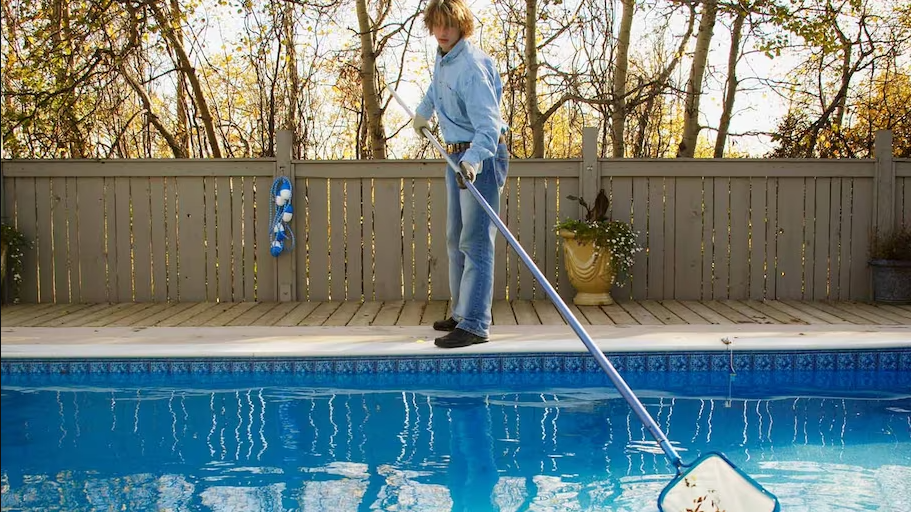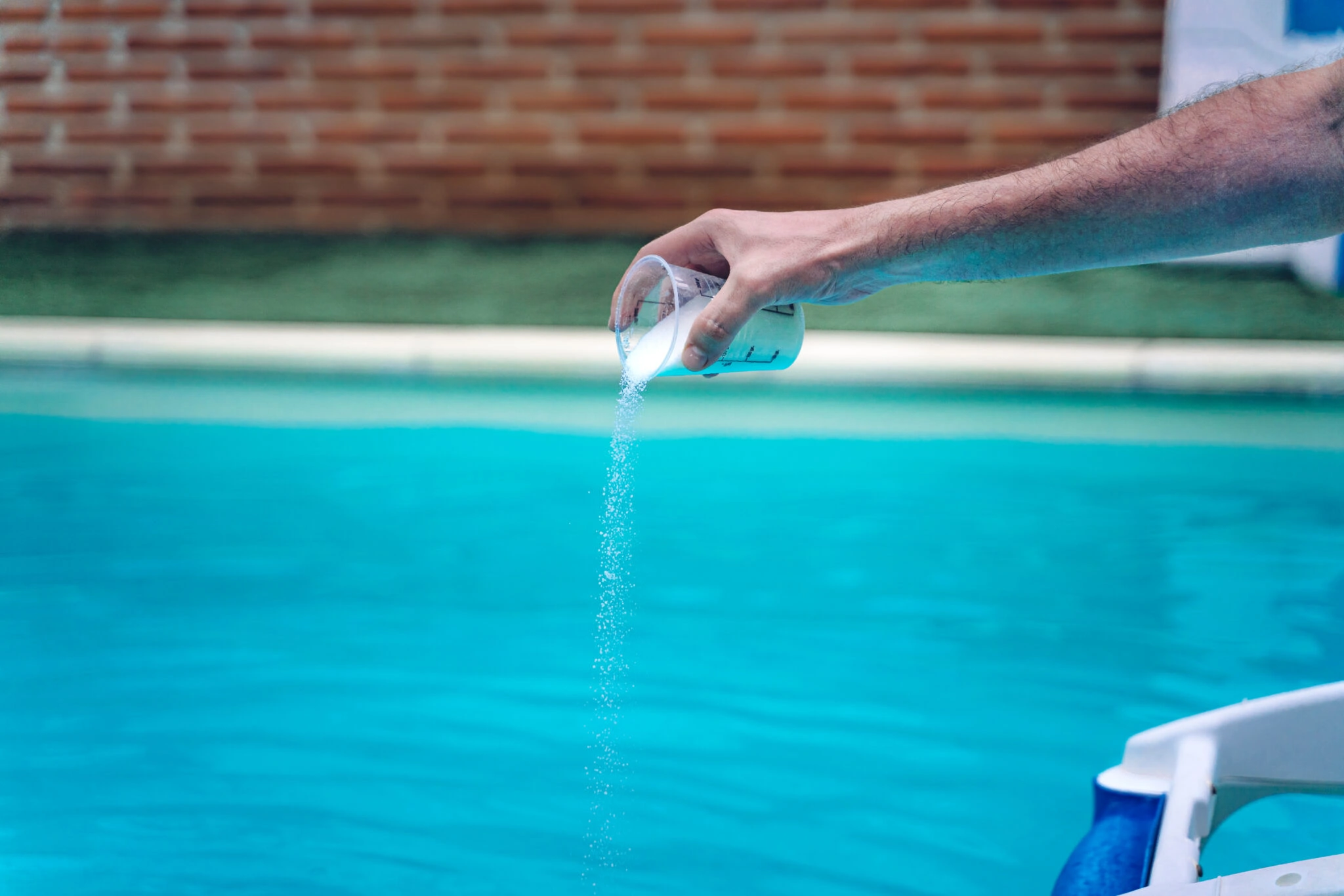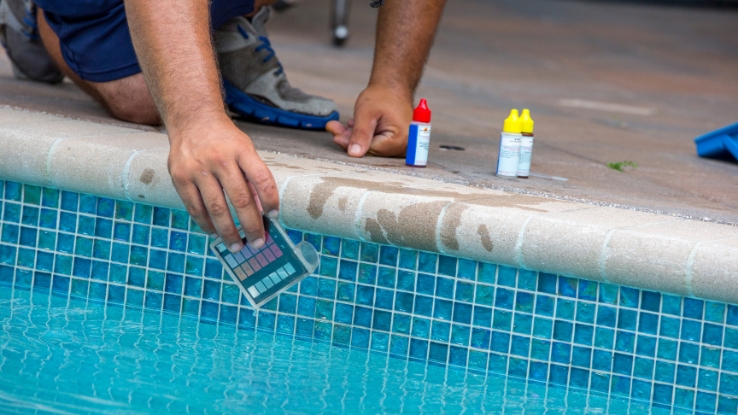Yes, you need to shock your pool before winterizing it. Shocking your pool before you shut it down for the season will help prevent the growth of algae and other harmful bacteria9. We recommend shocking your pool two or three days before you plan to shut things down. That will give your pool water a few days to return to its normal chlorine levels before you proceed with the winterization process.
Shocking your pool means adding a large dose or “shock” of concentrated chlorine, either powder or liquid, to the water. It rapidly rebalances and adjusts chlorine levels in the water. Shocking raises the levels of “free” chlorine molecules that find and eliminate bacteria, algae, and other elements that can discolor or cloud the water or affect pool equipment performance10.
There are three main types of pool shocks: liquid chlorine, calcium hypochlorite (Cal-Hypo), and trichlor. Each type has its own advantages and disadvantages, such as pH, calcium levels, and dissolvability. You should choose the type that suits your pool needs and follow the package instructions for how to mix and apply the shock properly.
To shock your pool, you should first test your pool water to see what kind of shape it’s in. Test the pH, alkalinity, and calcium hardness and adjust them as needed. Then, add the pool shock to your pool water, either directly or by pre-dissolving it in a bucket of water. Make sure to wear protective gloves and goggles when handling pool shock. Run your pool pump for at least eight hours after shocking to circulate the water. Wait 24 hours before using your pool again.
Shocking your pool before winterizing it will ensure that your pool is properly sanitized and protected from the cold weather. It will also reduce the costs of de-winterizing your pool in spring.





